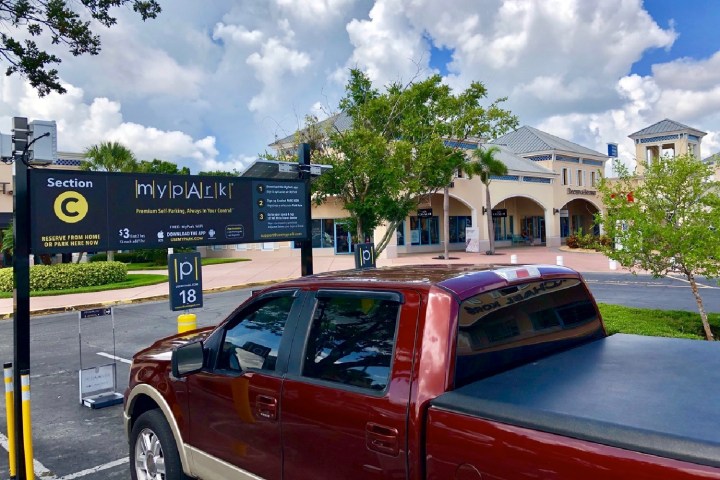
Want to be sure you get a parking spot at the mall on Black Friday? Maybe you should get a robot to guard your place for you. No, sadly, Boston Dynamics isn’t leasing out its backflipping parkour-performing Atlas robot or its canine-inspired Spot robot for the day. But the startup MyPark is nonetheless offering a service that allows users to book a parking spot, which will then be reserved by a collapsible “robot,” ready to hold your space until you arrive. And it’s not even asking all that much to do it!
“MyPark allows you to reserve a parking spot on demand, or up to six months in advance, at major malls with a touch of a button,” MyPark CEO Luis Mayendia told Digital Trends. “That spot is reserved by our MyPark bots that are in each spot. Usually we have several sections of 5-10 spaces each around the mall. This ensures that wherever you’re headed inside, there’s probably a MyPark section nearby. On the app’s home screen there is a list of locations with the number of available spaces and the rate. Once you select the site you’ll see the list of the sections at that mall. If that section has available spaces, you can get one on demand by tapping on the section you wish to park in. The best available space will automatically be assigned to you.”
The robot (which is really more of an automated barrier) will guard your space until you arrive, and tap “Let me in” on your MyPark app. At this point, the barrier collapses so that you can drive your car into the space. When you leave again, the robot will spring to life once more, guarding the spot until the next person comes along. The service is already being used in 18 malls in five different states, with more sites on the way. According to Mayendia, MyPark already has thousands of happy users. It costs $1 to $3 for two hours, and an extra charge for each hour after that.
“Like many inventions, MyPark was born out of necessity,” he continued. “Ricardo Blanco, our co-founder, had a parking space that was always being used by people going to the bank in the lobby of his office building. While developing a remotely operated barrier to install in his space, we realized that we could take that technology and turn it into a service everyone could use. The idea that you can reserve a spot in front of your favorite entrance at the mall, and actually be able to control access to it from your smartphone, was really appealing to us as drivers.”


